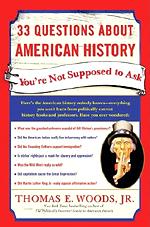Myth and History
by Ryan McMaken by Ryan McMaken
Jorge Luis Borges was fond of writing reviews of books that may or may not have ever been written. He also wrote on philosophies and philosophers that may or may not have ever existed. Borges might describe in the tiniest of detail the intricacies of a dead essayist whose ideas once amazed and scandalized, but who is now forgotten. Whether or not the philosopher in question ever actually existed is not made clear, and Borges would weave together truth and fiction to make the truth of the matter all the more elusive.
With such tales, Borges’ point (one of them, at least) was to illustrate how incomplete is the knowledge of the past possessed by even his presumably educated readers. Borges’ people and ideas might be fiction, but forgotten men and ideas are plentiful, and isn’t it possible that some of the best ideas of history have been consigned to obscurity? Borges provides a brief glimpse into possible history and shows that the common knowledge of today is not as unassailable as we might think.
 I was reminded of this while reading Thomas Woods’ new book, the excellent but rather unfortunately ponderously titled, 33 Questions About American History You’re Not Supposed to Ask. In many ways, reading Woods’ book is a study of American history found in a discarded text in a darkened Borgesian library. The book’s series of short treatments of forgotten, abused, and maliciously ignored episodes in American history reveal a reality rarely known by even educated Americans.
I was reminded of this while reading Thomas Woods’ new book, the excellent but rather unfortunately ponderously titled, 33 Questions About American History You’re Not Supposed to Ask. In many ways, reading Woods’ book is a study of American history found in a discarded text in a darkened Borgesian library. The book’s series of short treatments of forgotten, abused, and maliciously ignored episodes in American history reveal a reality rarely known by even educated Americans.
33 Questions covers a variety of topics separated out into 33 short chapters. A lot of ground is covered from affirmative action to immigration to that old chestnut about the Iroquois Confederation being the inspiration for the American constitution. But the most useful and enduring chapters will likely be those that deal with two topics in particular: fiscal policy and the constitution.
The chapters on these topics are possibly the most helpful because belief in these myths in particular is so widespread, and there are so few scholars or laypeople willing to contradict them.
One would think, for example, that by now that the failure of Roosevelt’s New Deal to end the Great Depression, or to even avoid making it worse would have gained some traction among the general public, but, despite the fact that — as Woods points out — even pro-Roosevelt historians are beginning to admit the New Deal’s failure, it remains desperately hard to find anyone on the street willing to say an unkind word about it. The opposite is true of capitalism, of course, which is still blamed for causing the Depression. But drawing on the Mises-Hayek business cycle theory, Woods examines earlier panics and depressions, illustrating the true causes behind both the depression and the failure of the New Deal. Woods goes on to address labor unionism, obscure but heroic entrepreneurs, and the hated Herbert Hoover with impressively effective brevity.
Most interesting, however, are the eight chapters Woods devotes to constitutional matters around the powers of the presidency, jury nullification, and now-ignored debates over the proper interpretation of the constitution.
This is where Woods provides an alternative history, that if not for some very recent scholarship (such as this and this, for example), may well be all but forgotten by modern readers. Woods’ method is to simply illustrate the fact that what is now almost universally accepted as the undisputed truth about the constitution, was once the subject of the most heated debates.
Yet, as any standard American Politics textbook will tell you, the validity of the modern interpretation of the so-called commerce clause and the elastic clause of the constitution are simply not to be challenged. The texts mention no debate. Nor is there any recognition of the fact that Thomas Jefferson denied the federal government’s prerogative to judge for itself what is constitutional and what is not. Jury nullification is also ignored as are the arguments in its favor penned by the likes of John Adams, John Jay, and Thomas Jefferson.
Recognizing that an active and widespread debate once existed over these matters goes a long way toward undermining the blind acceptance of the myths. A key ingredient in mythmaking is to assure the public that only kooks and fools ever disputed the myth at all. Hence, we are left with assertions that only tiny groups of cranks ever questioned presidential war powers, or supported the Whiskey Rebellion, or opposed the ratification of the constitution.
The reality was quite different of course, as Woods makes clear. But in America, the losing side in a political struggle has never garnered much sympathy, and as soon as any such matters are settled, whether by the sword or by the stroke of a pen, the losers are immediately forgotten.
In his Democracy in America, Alexis de Tocqueville noted this phenomenon:
At the present time the most absolute monarchs in Europe are unable to prevent certain notions, which are opposed to their authority, from circulating in secret throughout their dominions, and even in their courts. Such is not the case in America; As long as the majority is still undecided, discussion is carried on; but as soon as its decision is irrevocably pronounced, a submissive silence is observed, and the friends, as well as the opponents of the measure unite in assenting to its propriety…I know of no country in which there is so little true independence of mind and freedom of discussion as in America…In America the majority raises very formidable barriers to the liberty of opinion: within these barriers an author may write whatever he pleases, but he will repent if he ever steps beyond them…
It is not difficult to see why myths of history perpetuate themselves. The debate over the commerce clause or whether or not the New Deal actually caused unemployment may have at one time been acceptable for the American public, but the "majority" has "irrevocably pronounced" its decisions, and the myth must now stand unquestioned forever. This is precisely why Woods’ book and other libertarian works of historical revisionism are so important.
One of the greatest barriers to the libertarian revisionist however, as Murray Rothbard has pointed out, is that Americans generally subscribe to what Rothbard called the "Whig theory" of history:
On analogy with the Whig theory of history, coined in mid-nineteenth-century England, which maintained that things are always getting (and therefore must get) better and better, the Whig historian of science, seemingly on firmer ground than the regular Whig historian, implicitly or explicitly asserts that “later is always better” in any particular scientific discipline. The Whig historian (whether of science or of history proper) really maintains that, for any point of historical time, “whatever was, was right,” or at least better than “whatever was earlier.”
And this idea illustrates why a bad idea, perhaps once proffered by one politician among many, and reviled by millions, might then nearly rise to the level of divine revelation when viewed by later generations. If the Federalists won the fight over nullification, or the North won the Civil War, or the central planners passed the New Deal, then the matter is settled. For the typical student of American history, it seems that whatever was, truly was right.
 Although, it is far more satisfying to view American history, as many do, as a chronicling of glorious victories over evil and oppression, the opposite is undoubtedly true for the long list of champions of liberty from John Taylor of Caroline to the now obscure St. George Tucker. 33 Questions offers an excellent view into the world that once existed in which the ideas of such men could be freely argued. The ideas of classical liberalism once supported by these men and millions of their countrymen are now often as little remembered as one of Borges’ make-believe books.
Although, it is far more satisfying to view American history, as many do, as a chronicling of glorious victories over evil and oppression, the opposite is undoubtedly true for the long list of champions of liberty from John Taylor of Caroline to the now obscure St. George Tucker. 33 Questions offers an excellent view into the world that once existed in which the ideas of such men could be freely argued. The ideas of classical liberalism once supported by these men and millions of their countrymen are now often as little remembered as one of Borges’ make-believe books.



